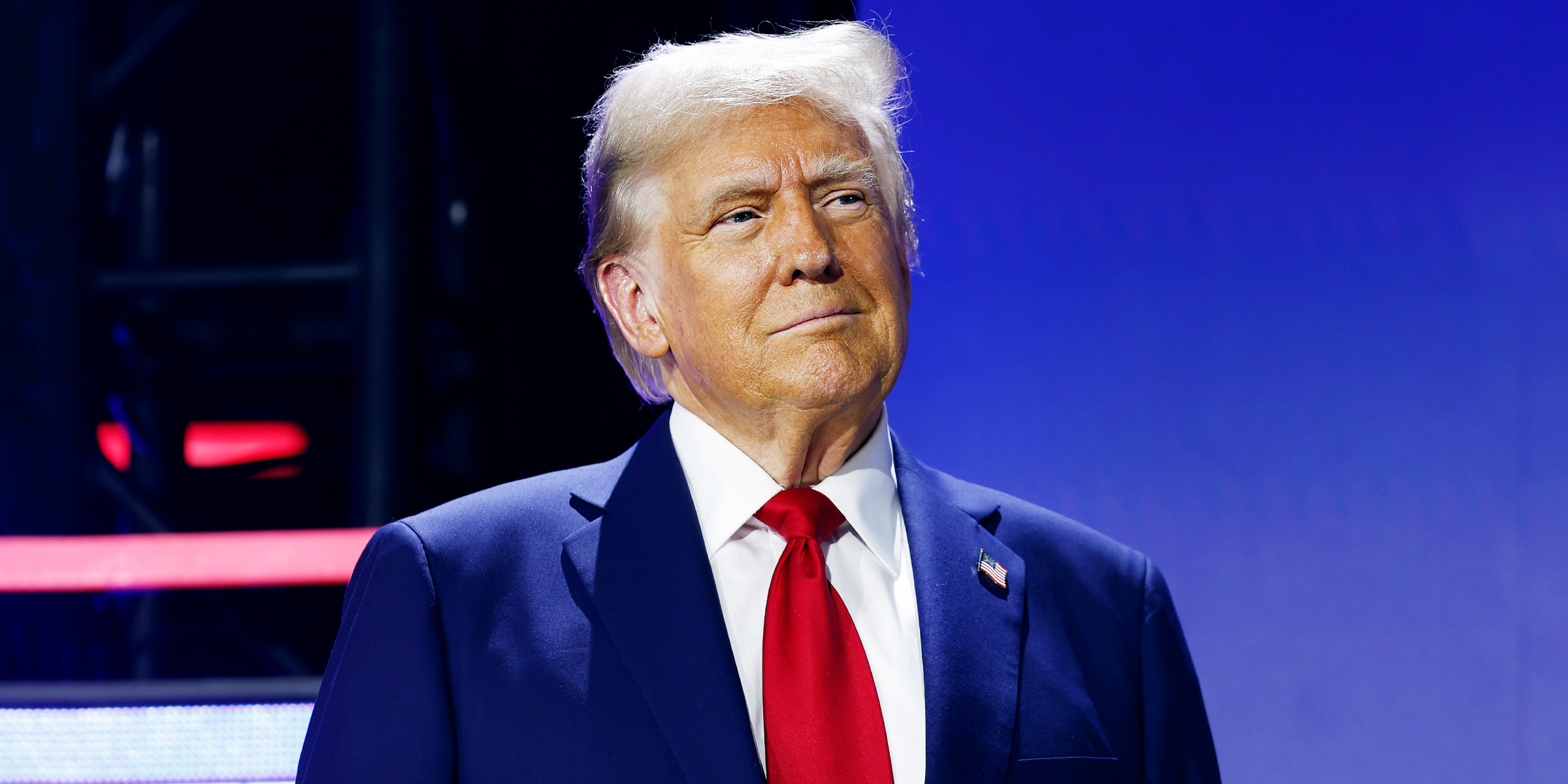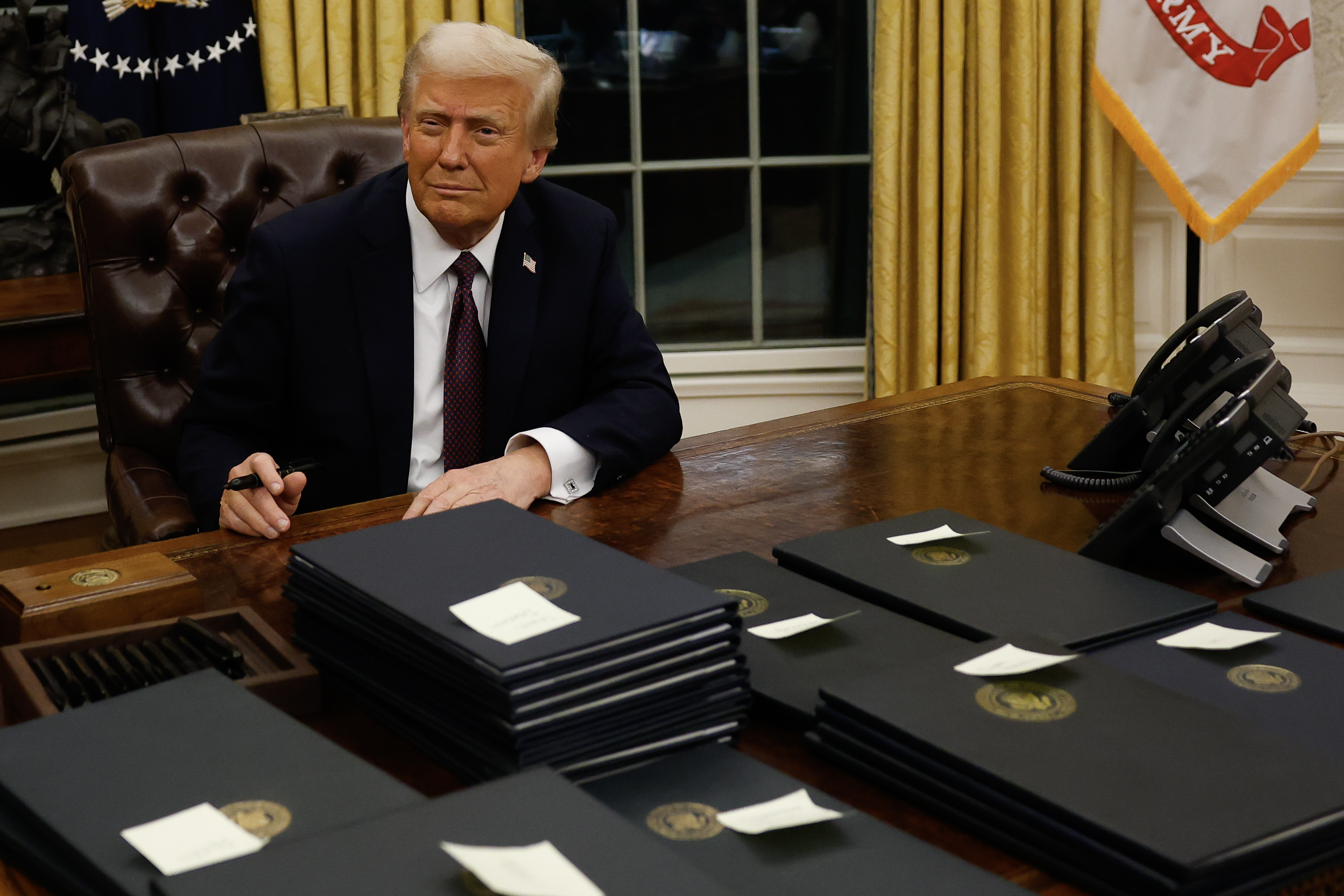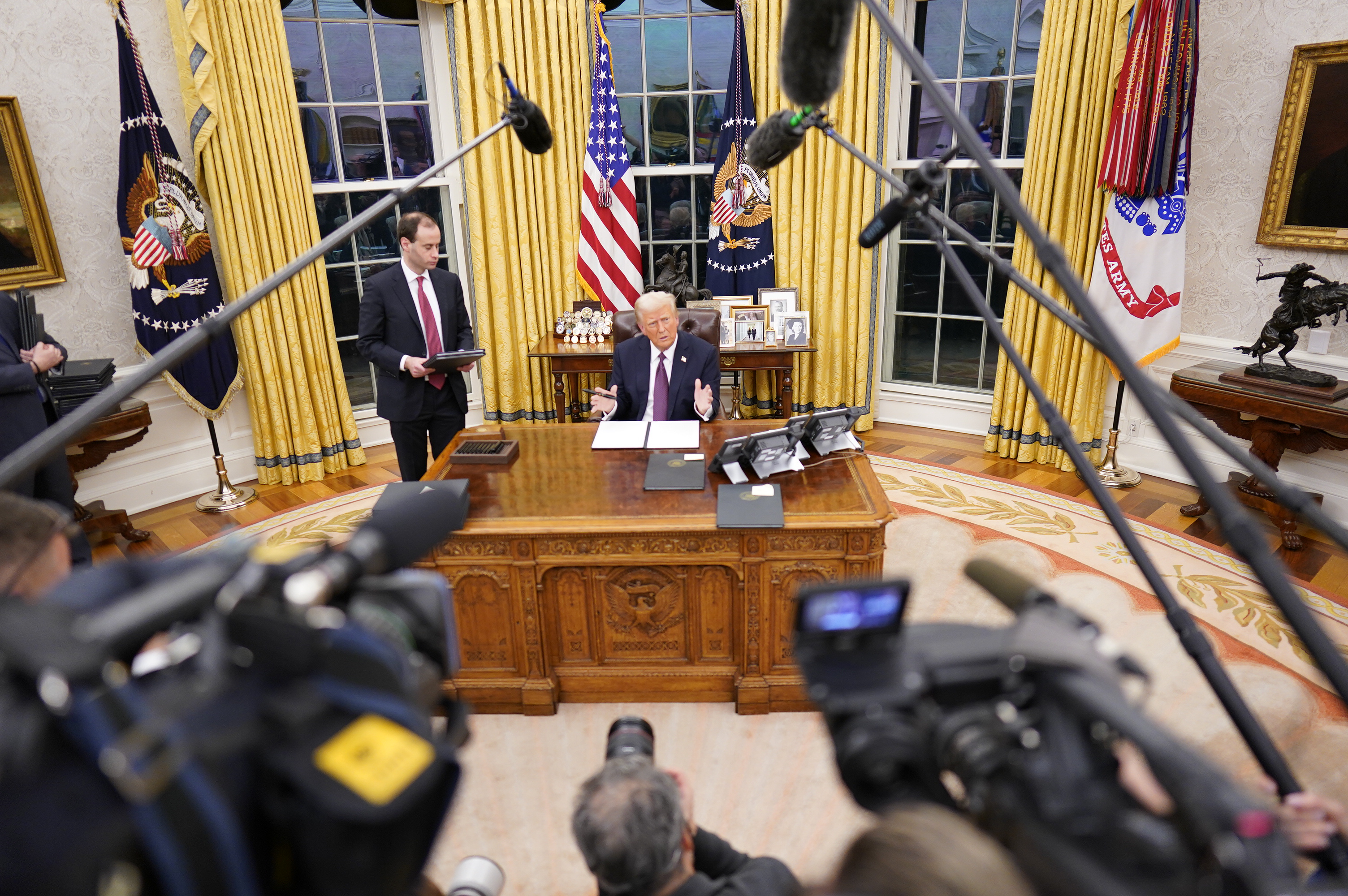
President Donald Trump Announces 90-Day Tariff Pause — Details
The temporary rollback marks a sharp contrast from the US president’s long-standing tough stance on trade.
In a move that caught many off guard, President Donald Trump announced a sweeping 90-day pause on reciprocal tariffs affecting dozens of countries, with one major exception, China.

President Donald Trump signs executive orders in the Oval Office in Washington, DC., on January 20, 2025 | Source: Getty Images
Trump has been particularly steadfast in his belief that high tariffs are a cornerstone of US economic policy. Hence, the announcement, which came late Wednesday, April 9, via the president’s Truth Social account, was unexpected.
In his post, he detailed a 90-day tariff pause and the reasoning behind it. According to the post, countries that had been hit with reciprocal tariffs at midnight will now see those duties reduced to a universal 10% rate for the next three months.
Trump cited ongoing outreach from over 75 nations, which he said had contacted US agencies including the Departments of Commerce and Treasury, as a major reason for the pause. He noted that these countries had not retaliated against US measures, prompting what he described as a “strong suggestion” to deescalate, at least temporarily.

President Donald Trump signs executive orders in the Oval Office in Washington, DC., on January 20, 2025 | Source: Getty Images
“This is a window for real negotiations,” Trump said in his statement, pointing to continued talks surrounding trade, trade barriers, tariffs, currency manipulation, and non-monetary tariffs.
However, the softening does not apply to China. Trump doubled down on his hardline approach to the world’s second-largest economy, announcing an increase in tariffs from 104% to 125%, effective immediately.
He cited Beijing’s recent retaliatory tariffs and what he called a lack of “respect” for global markets as justification for the hike. “At some point, hopefully in the near future, China will realize that the days of ripping off the U.S.A., and other Countries, is no longer sustainable or acceptable,” Trump wrote.
The tariff announcement represents a balancing act, offering temporary relief to many trade partners while escalating pressure on China. With the global economy watching closely, Trump’s strategy appears aimed at resetting the playing field without fully backing off from his aggressive trade agenda.
As the 90-day countdown begins, attention will turn to whether global leaders use the window to reach more stable trade agreements, or whether the pause is simply a brief intermission in a larger tariff standoff. Either way, Trump’s message is clear, concessions may be made, but, currently, not to China.
The lead-up to this dramatic pause began last Wednesday, April 3, when Trump shocked allies and markets alike with an announcement in the Rose Garden. He declared a national economic emergency and laid out a sweeping new tariff policy aimed at overhauling decades of US trade relations.
The president announced sharp new tariffs on nearly all major trading partners, including a 34% tax on Chinese imports and a 20% tariff on goods from the European Union. A universal 10% baseline was also imposed on imports from every country, unless otherwise specified.
In justifying the move, Trump said the tariffs were necessary to protect American workers and industries from what he described as decades of exploitation under a broken global trade system.
He argued that other nations had long taken advantage of the US, stating that America had been “looted, pillaged, raped and plundered” economically. The tariffs, he claimed, would bring back factory jobs, generate hundreds of billions in revenue, and restore fairness to global commerce.
The announcement marked a dramatic escalation in Trump’s trade agenda, and his rhetoric signaled little interest in compromise. Acting under the 1977 International Emergency Economic Powers Act, the president bypassed Congress to fulfill a key campaign promise , but the consequences were immediate.
Stock market futures plunged overnight amid fears of an economic slowdown, and critics warned of rising consumer costs on everyday goods like housing, cars, and clothing.
While Trump cast the tariffs as a patriotic duty and an overdue correction to global imbalances, the move drew skepticism from several corners of his own party.
Republican lawmakers from agricultural and border states raised concerns about retaliation and the impact on American exports, especially with allies caught in the crossfire. Still, Trump remained firm, insisting the US had been “ripped off” for more than half a century and that his administration was finally putting an end to it.
But now, he appears to have changed course. Known for his abrupt pivots, the 90-day pause may prove to be just that, a temporary breather rather than a lasting shift. For now, it’s a wait-and-see moment on whether this easing will hold or if it’s simply the calm before another storm.


